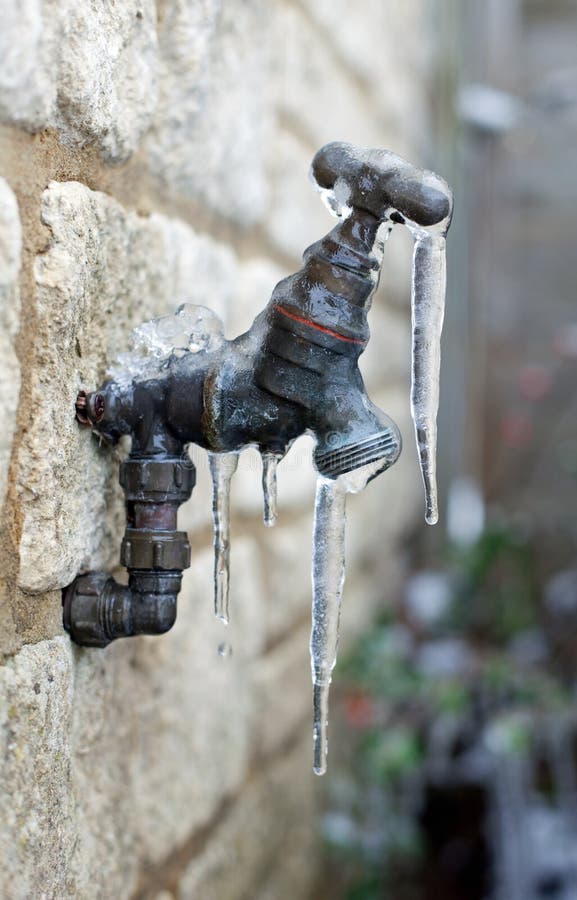Ways to Keep Pipes from Freezing Issues: Essential Guidance
Ways to Keep Pipes from Freezing Issues: Essential Guidance
Blog Article
What are your opinions regarding Prevent Frozen Pipes ?

Cold weather can damage your plumbing, especially by freezing pipes. Here's how to stop it from taking place and what to do if it does.
Introduction
As temperatures decline, the risk of frozen pipes boosts, potentially bring about costly repairs and water damages. Recognizing just how to stop icy pipelines is important for property owners in chilly environments.
Avoidance Tips
Insulating susceptible pipelines
Wrap pipelines in insulation sleeves or make use of warm tape to safeguard them from freezing temperature levels. Focus on pipelines in unheated or external areas of the home.
Heating strategies
Keep indoor spaces properly heated up, specifically areas with plumbing. Open closet doors to enable cozy air to distribute around pipes under sinks.
Just how to recognize icy pipelines
Seek lowered water flow from faucets, uncommon smells or noises from pipes, and visible frost on revealed pipes.
Long-Term Solutions
Architectural modifications
Take into consideration rerouting pipelines away from outside walls or unheated areas. Add added insulation to attic rooms, cellars, and crawl spaces.
Updating insulation
Buy premium insulation for pipelines, attics, and wall surfaces. Correct insulation aids keep constant temperature levels and lowers the risk of frozen pipelines.
Securing Outdoor Plumbing
Garden tubes and outdoor faucets
Detach and drain yard hose pipes before winter. Install frost-proof faucets or cover outdoor taps with insulated caps.
Comprehending Icy Pipes
What triggers pipes to freeze?
Pipelines ice up when exposed to temperature levels below 32 ° F (0 ° C) for prolonged periods. As water inside the pipes ices up, it broadens, taxing the pipeline walls and potentially causing them to break.
Risks and damages
Frozen pipes can lead to water system disturbances, residential or commercial property damage, and expensive repair services. Burst pipes can flooding homes and trigger comprehensive architectural damage.
Indicators of Frozen Water Lines
Recognizing frozen pipelines early can stop them from rupturing.
What to Do If Your Pipes Freeze
Immediate activities to take
If you suspect icy pipes, keep faucets open to soothe pressure as the ice thaws. Use a hairdryer or towels taken in hot water to thaw pipes slowly.
Final thought
Protecting against icy pipes calls for positive steps and fast responses. By understanding the causes, indicators, and preventive measures, home owners can secure their plumbing during winter.
5 Ways to Prevent Frozen Pipes
Drain Outdoor Faucets and Disconnect Hoses
First, close the shut-off valve that controls the flow of water in the pipe to your outdoor faucet. Then, head outside to disconnect and drain your hose and open the outdoor faucet to allow the water to completely drain out of the line. Turn off the faucet when done. Finally, head back to the shut-off valve and drain the remaining water inside the pipe into a bucket or container. Additionally, if you have a home irrigation system, you should consider hiring an expert to clear the system of water each year.
Insulate Pipes
One of the best and most cost-effective methods for preventing frozen water pipes is to wrap your pipes with insulation. This is especially important for areas in your home that aren’t exposed to heat, such as an attic. We suggest using foam sleeves, which can typically be found at your local hardware store.
Keep Heat Running at 65
Your pipes are located inside your walls, and the temperature there is much colder than the rest of the house. To prevent your pipes from freezing, The Insurance Information Institute suggests that you keep your home heated to at least 65 degrees, even when traveling. You may want to invest in smart devices that can keep an eye on the temperature in your home while you’re away.
Leave Water Dripping
Moving water — even a small trickle — can prevent ice from forming inside your pipes. When freezing temps are imminent, start a drip of water from all faucets that serve exposed pipes. Leaving a few faucets running will also help relieve pressure inside the pipes and help prevent a rupture if the water inside freezes.
Open Cupboard Doors
Warm your kitchen and bathroom pipes by opening cupboards and vanities. You should also leave your interior doors ajar to help warm air circulate evenly throughout your home.

Hopefully you enjoyed our excerpt on Helpful Tips to Prevent Frozen Pipes this Winter. Thank you for taking the time to read through our piece of content. Enjoyed our blog entry? Please share it. Help others find it. Thank you so much for taking the time to read it.
Schedule A Service Call Report this page